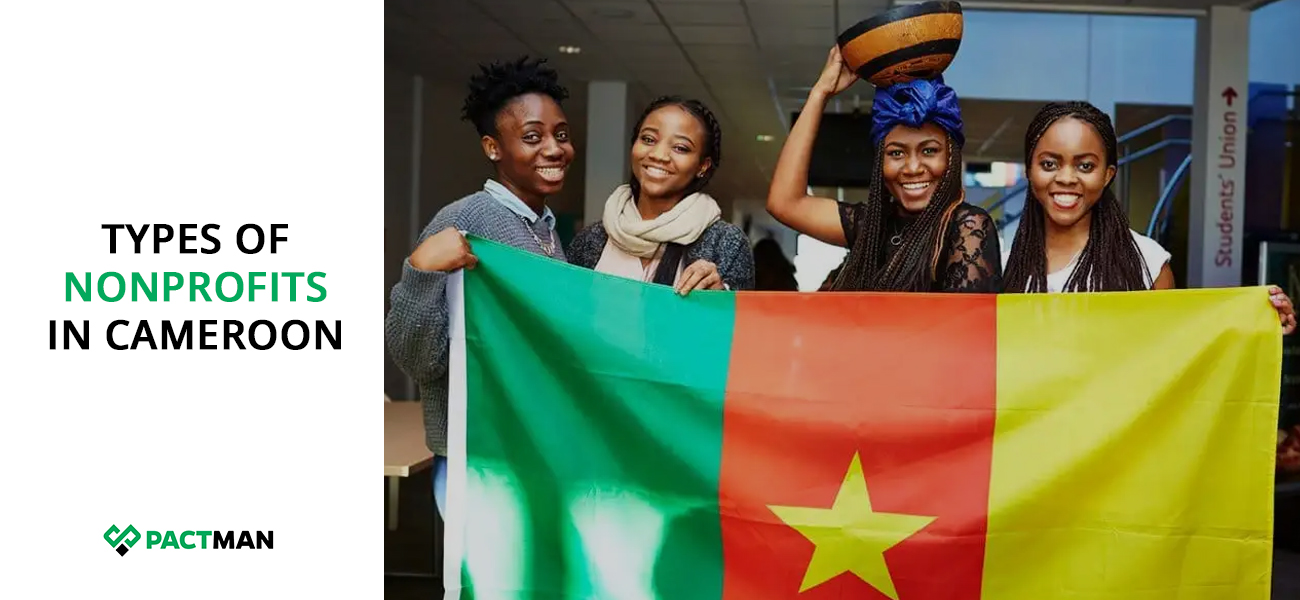Cameroon has a long history of civil society which goes as far back as the 1980s. The intense economic crisis and high unemployment rates in the nation resulted in the emergence of various types of nonprofits. During this period, the government was unable to provide jobs or even the basic social services required for its citizens. This in effect birthed the emergence of associations and corporation groups in the 90s to address these critical issues in the country.
This article seeks to outline the various types of nonprofits in Cameroon and their contributions to the growth of the nation.

- Over 4 million Cameroonian citizens require humanitarian assistance
- Nonprofits in Cameroon lack a robust system to make the needed impact that can transform the communities
- The solutions provided by NGOs are yet to cater for even a fraction of the population that needs assistance
What are the types of nonprofits in Cameroon?
The law governing Cameroonian NGOs outlines three principal nonprofit entities functional in the country. They are:
1. COMMON INITIATIVE GROUPS (CIGs):
These types of nonprofits are established by individual or corporate bodies to address the economic and social issues in the community. Common initiative groups (CIGs) and cooperative societies in Cameroon are governed by the same law. However, CIGs are not allowed to have loans and savings as their primary activities.
2. COOPERATIVE SOCIETIES:
These types of nonprofits are established either by a group of individuals who come together to achieve mutual goals. Cooperative societies are established democratically and bound by a contract which entails the rules governing their activities. The contract also outlines other activities including the equitable distribution of its capital, profit and risk-bearing.
It costs nothing to set up a cooperative society. However, these entities are required to abide by the laws of the Republic. Cooperative societies are also restricted from making profits for themselves and surplus is entrusted to its members.
3. ASSOCIATIONS
These types of nonprofits are created by a number of individuals to accomplish certain goals and objectives other than making profits. Associations in Cameroon are also governed by law.
These NPOs have two systems governing their formation. The first is the Declaration System. This requires the founder of an association to reveal to the authorities the legal framework of the organization under the existing laws.
The second is the System of Authorization. This is permission given by the administration to an individual or group of persons to fulfil a legal act which is the creation of an association. The country’s legislation has established a system of authorization for both foreign institutes as well as religious congregations demanding legal existence.
How have nonprofits in Cameroon contributed to the nation’s growth?
The impact of nonprofit entities in Cameroon can largely be seen in the agricultural development sector. NGOs are the most prominent players and proponents of the agriculture sector growth in the country. The African Development Bank Group reported that agriculture is one primary engine of growth in Cameroon. The sector is also the primary source of employment in the country at about 60% in 2020.
However, the various nonprofits lack the needed resources to reach the vast number of citizens that require urgent humanitarian assistance in the country.
The UN Office for the Coordination of Humanitarian Affairs (OCHA) revealed that over 4 million Cameroonian citizens need humanitarian assistance. Also, in 2020, 2.7 million citizens were facing acute food insecurity with over one million internally displaced persons.
The Norwegian Refugee Council (NRC) also estimated that over 56.4% of Cameroonian women have suffered sexual or emotional abuse. Also, the case of war between the government and separatists has caused the death of 4,000 citizens and 765,000 displacements.
The NRC’s Statement in 2019 to the UN Security Council reported that “the absence of a humanitarian response commensurate to the hundreds of thousands of people in great and unmet need is striking. We are too few humanitarian actors on the ground, and we are gravely underfunded.”
Conclusion
NGO impacts in the Cameroonian nation cannot be underestimated. Also, the various types of nonprofits in the country have contributed to the empowerment and survival of several communities.
Nonetheless, Cameroonian nonprofits lack a robust system to make the needed impact that can transform the community. The solutions provided by NGOs are yet to cater for even a fraction of the population that needs assistance. Hence, nonprofits must seek ways to improve effectiveness on a larger and wider scale to bring about impact in the country.
If you enjoyed reading this article, share your comment with us at the bottom of the post.


